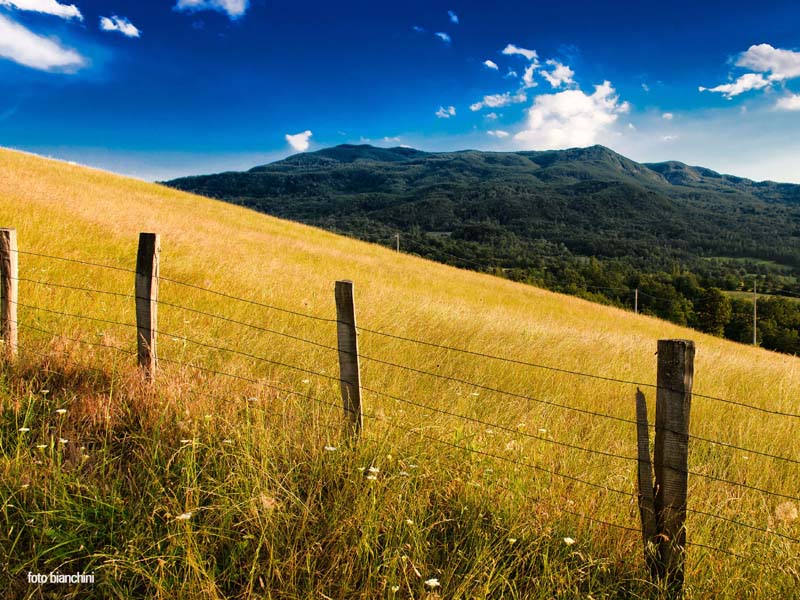A park where people come together in nature to regain their balance, to learn, explore, and savor
A diverse landscape
Divided by the stunning Apennine mountain ridge, the Park's warm, Mediterranean-influenced western side meets cooler, higher pastures and forests to the east, creating a tapestry of natural and cultural diversity. Lands in and around the Park have been home to rural settlements for thousands of years. Today, these lands are going through an unprecedented evolution. High mountain meadows and landscapes are reverting to wilderness as the rural communities become smaller as their people move to the cities. Wild and rural now exist side by side, creating a rich environment full of biodiversity.
Visitors traveling through the Park will experience different climates between the north and south regions of the park. This is due to the Alpine-influenced climate of the north and the Mediterranean climate of the south. The mountainous and forested Appenine ridge separates Tuscany from Emilia, giving visitors access to open space, solitude, incredible views, and glimpses of widlife. The base of the mountain is home to many types of plants, but is mainly composed of grasslands. Southwest of the mountain ridge, forests open to reveal rocks, lakes, and grasslands, where oak and chestnut forests grow. Due to the variety of ecosystems, the biosphere reserve is able to support 70% of all the animal species present in Italy, with at least 260 aquatic and terrestrial species of plants.
Due to centuries of farming and sheep grazing, agriculture has shaped the landscape, creating a strong bond between humans and nature which has persisted to the present. The diversity in the land creates a mixed agricultural landscape, featuring grassy pastures for dairy cattle grazing in Emilia, and vinyards, olive groves and wheat fields in Tuscany.
Man & nature: Community, landscape, food
Families and communities have worked together in the Park, generation by generation for thousands of years. The work of entire generations of Park residents has shaped the landscape the way that we see it today. In fact, this is why the landscape in the Park is not just nature, it is culture, history and family.
Land and family
Family, home and land are deeply connected in the Park's culture and are perceived as very similar concepts. The sense of belonging to the land is very strong: locals might live elsewhere, but still keep houses and fields in the Park because to them land means home, roots and family.
Landscape: a community matter
In each settlement, a few families formed a community, who shared the use of woods and grazing lands. These uses were regulated by laws, some of which have persisted -since the Middle Ages until today. The use and care of land (grazing, growing, wood cutting) and agricultural practices - harvests of hay, chestnuts, transhumance - have always been a community matter. The vast landscape that you see in Park had the purpose of producing food for the local communities including grasslands for meat, milk, wool and cheese, fields for cereals, chestnut groves for flour, vineyards for wine and olive groves for oil.
Food: a celebration of man and nature
Food in the Park is the celebration of the bond between man and nature, and it closely reflects the history and identity of the region. In the Park you not only experience the landscape, but you can taste it. Here, a meal is never just food consumption but it is sharing and communicating flavors, skills, history and the sense of a community. That is why food quality in the park is generally so high, and why so many authentic products and dishes have survived for thousands of years.










